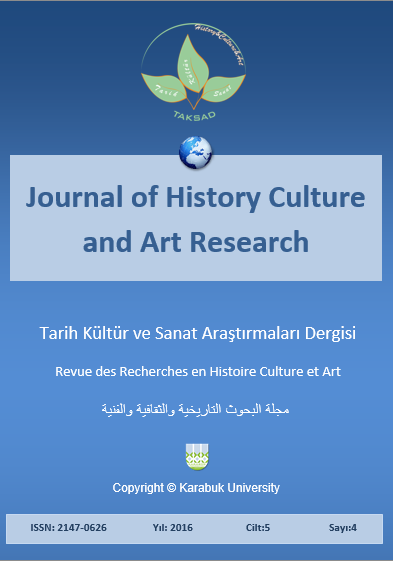Sustainable Urban Regeneration with a Physical Infill Development Approach: a Case Study on Isfahan Central Region
DOI:
https://doi.org/10.7596/taksad.v5i4.611Keywords:
Sustainable Urban Regeneration, Physical Approaches to Urban Regeneration, Restructuring, ArcGis.Abstract
The idea of regeneration and revitalization of historical distressed urban areas has been the focus of academic and scientific discussions over the last five decades. The evolution of these ideas, from a mere physical approach after the reconstruction of World War II ruins to the ideas of urban sustainability, has always been in line with adjustments to circumstances and accelerated developments in cities. The present study aims to investigate one of the new approaches to renewal, improvement and modernization of distressed urban areas to examine sustainable urban regeneration approach based on physical approaches. Multiple topics were examined in the case study conducted in Isfahan districts 1 and 3 to propose restructuring strategies for these historic districts using analytical methods. We employed analytical methods such as ArcGis software for reaching conclusions and obtaining results. The findings from the case study suggested a structural gap between the northwest district and Isfahan districts 1 and 3 restructuring strategies. Also, the strategies and suggestions regarding the discussion points are extracted.
References
Daneshvar, Abdi, Zohre (2004). An Introduction to Fundamental Theories of Planning with An Emphasis on Urban Planning. Ziba Arts Quartely. Number 15. pp. 42-57
Falamaki, Mohammad Mansour (1979). An Analysis of Urban Regeneration Experiments in Iran. From Venice to Shiraz. Tehran: Ministry of Construction and Housing.
Galdini, Rossana (2005). Urban Regeneration Process: The Case of Genova. An Example of Integrated Urban Development Approach. Genova Development of Sociology and Social Sience.
Habibi, Seyyed Mohsen, Maghsoudi, Maliheh (2008). Urban Regeneration. Tehran: Tehran University.
Hajipour, Khalil (2007). An Introduction to Urban Regeneration Evolution Processes: From the First World War until the Third Millenium. Andishe IranShahr Quarterly. Second Year. Volume 9-10.
Hall, Peter (1997). Regeneration Policies for Peripheral Housing State: Inward and Outward Looking Approach. Urban Studies. 34, 873.
Hanachi, Pirooz, Khademzadeh, Muhammad Hussein, Shayan, Hamidreza, Kamelnia, Hamed, Mehdinezhad, Javad (2008). A Comparative Analysis of Urban Regeneration Experiments in Iran. Tehran: Sobhan Noor.
Iran Society of Condultant Engineers (2009). Planning and Urban Design Standards. Space and Space Making Volume. Translation Team: Giti Etemad, Mostafa Behzadfar, Sasan Salehi Milani, Tehran: Iran Society of Condultant Engineers.
Kalantary, Khalilabad, Hossein and Poorahmad, Ahmad (2007). Techniques and Experiences of Restoration of Urban Historical Texture. Tehran: Publication of Human Sciences Researches. Cultural and Social Studies of Jahad Daneshgahi. Second Publish.
Kamrava, Muhammad Ali (2011). Phenomenology of Distress Texture. Abstracts of Articles of the National Conference Rehabilitation and Recreation of Historical Texture. Distress Texture and Illegal Settlements of Shiraz.
Porats, N. (2004). Regeneration and Urban Projects, in Cities. Alinea Electric. Genova.
Rogres, Richard (1999). Toward an Urban Renaissance. London: E and FN Spon.
Sahi Zadeh, Mahshid, Izadi, Mohammad Saeed (2008). Security and Urban Development. Two Complementary or Paradoxical Approaches, Number 45.
Downloads
Published
How to Cite
Issue
Section
License
All papers licensed under Creative Commons 4.0 CC-BY.- Share — copy and redistribute the material in any medium or format
- Adapt — remix, transform, and build upon the material for any purpose, even commercially.
Under the following terms:
Attribution — You must give appropriate credit, provide a link to the license, and indicate if changes were made. You may do so in any reasonable manner, but not in any way that suggests the licensor endorses you or your use.
- No additional restrictions — You may not apply legal terms or technological measures that legally restrict others from doing anything the license permits.







